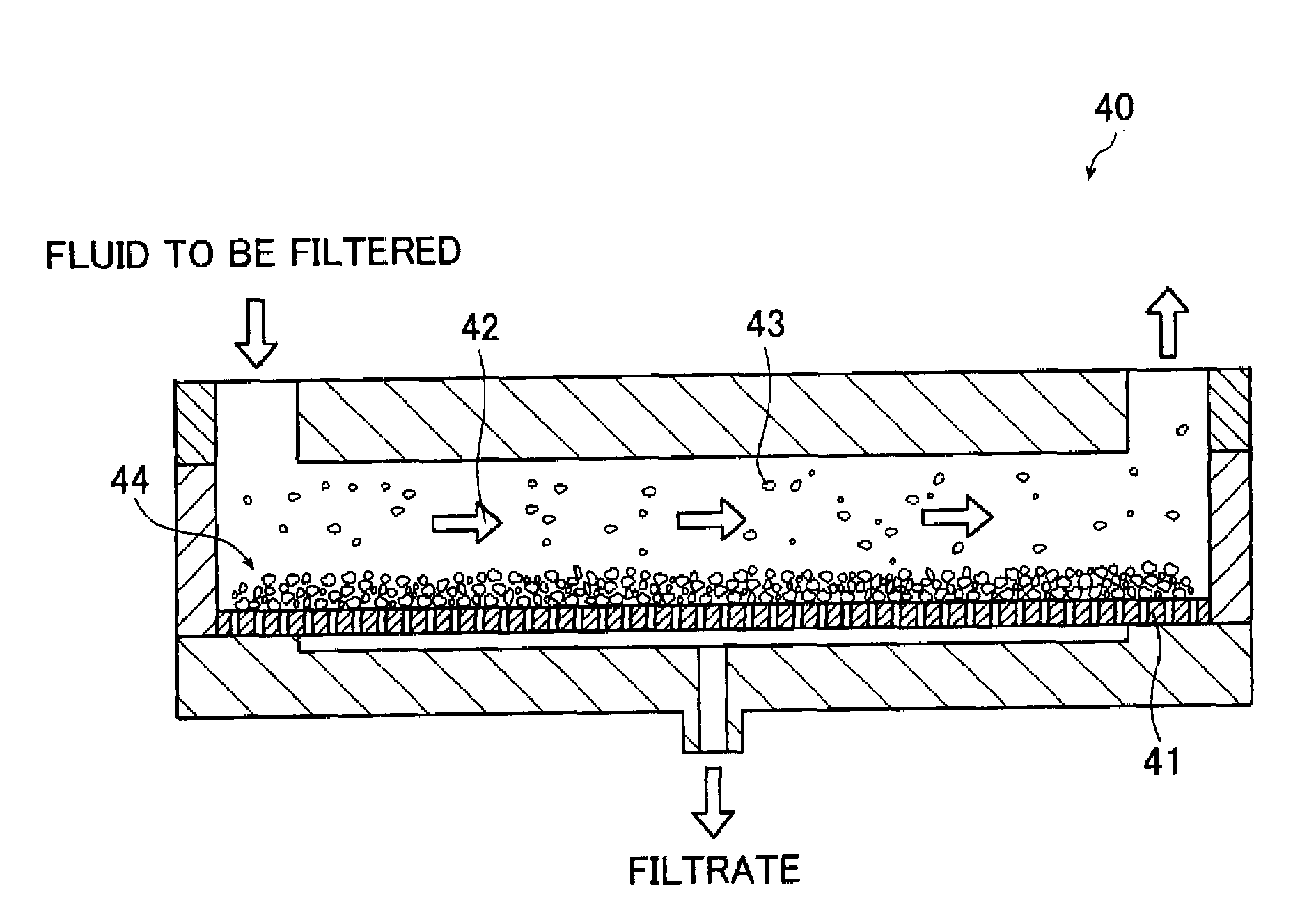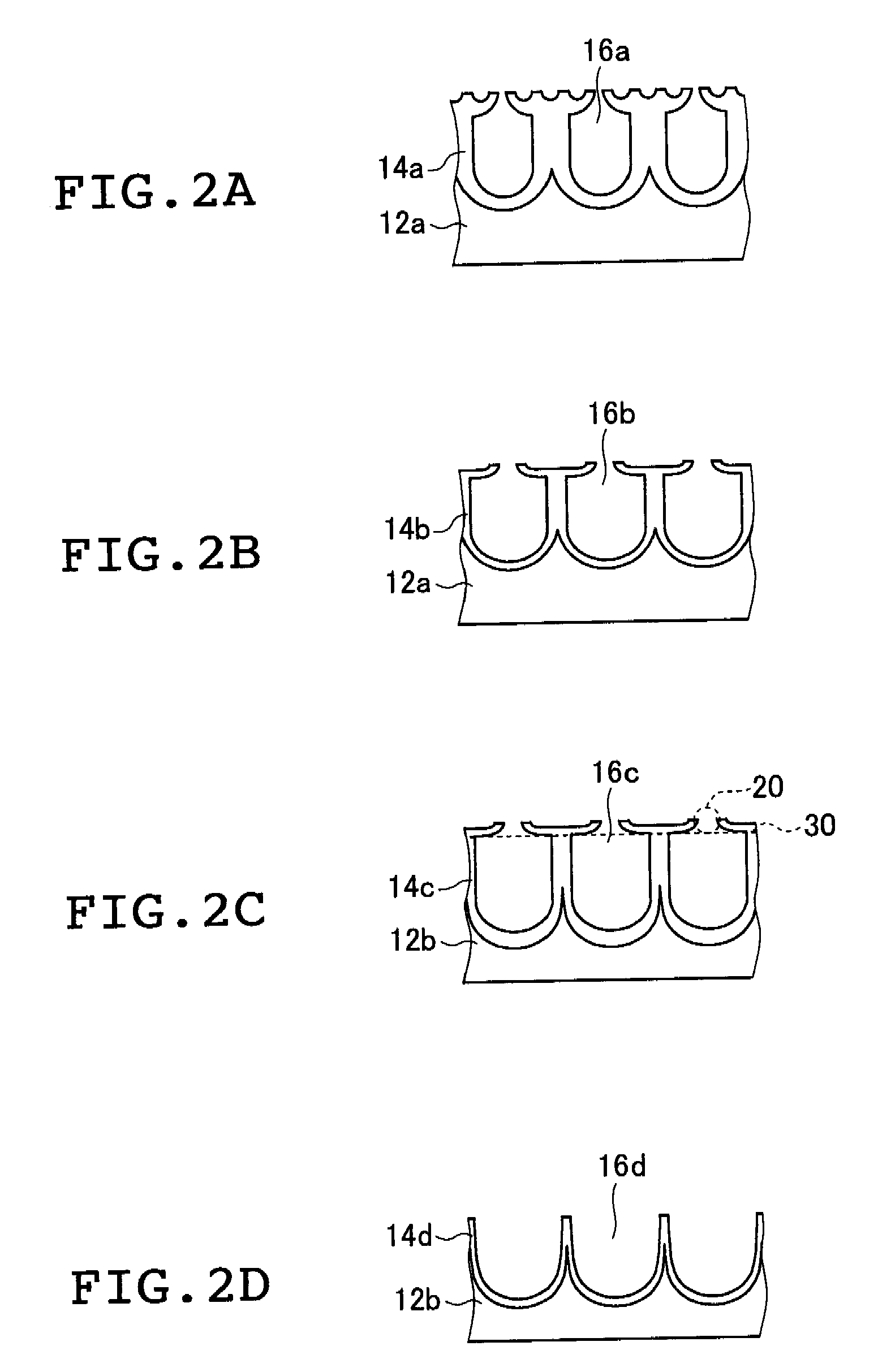Cross-flow filtration method and cross-flow filtration device
- Summary
- Abstract
- Description
- Claims
- Application Information
AI Technical Summary
Benefits of technology
Problems solved by technology
Method used
Image
Examples
example 1
1. Preparation of Porous Alumina Membrane Filter
(1) Electrolytic Polishing
[0213]A high-purity aluminum substrate (Sumitomo Light Metal Industries, Ltd.; purity, 99.99 wt %; thickness, 0.4 mm) was cut to a diameter of 47 mm that allows it to be anodized, then subjected to electrolytic polishing treatment using an electrolytic polishing solution of the composition indicated below at a voltage of 25 V, a solution temperature of 65° C., and a solution flow velocity of 3.0 m / min.
[0214]A carbon electrode was used as the cathode, and a GP0110-30R unit (Takasago, Ltd.) was used as the power supply. In addition, the flow velocity of the electrolytic solution was measured using a vortex flow monitor FLM22-10PCW manufactured by As One Corporation.
Electrolytic Polishing Solution Composition:
[0215]
85 wt % Phosphoric acid (Wako Pure Chemical660 mLIndustries, Ltd.)Pure water160 mLSulfuric acid150 mLEthylene glycol 30 mL
(2) Anodizing Treatment
[0216]The sample obtained after electrolytic polishing w...
example 2
[0228]Example 1 was repeated except that an electrolytic solution of 0.50 mol / L oxalic acid was used for anodizing treatment and the voltage was 40 V, thereby obtaining a porous alumina membrane filter.
[0229]The resulting porous alumina membrane filter was subjected to shape analysis as in Example 1 and measurement of the amount of filtration per membrane area and per unit time. The results are shown in Table 2.
example 3
[0230]Example 1 was repeated except that anodizing treatment and film removal treatment were repeated three times in this order before carrying out re-anodizing treatment, thereby obtaining a porous alumina membrane filter.
[0231]The resulting porous alumina membrane filter was subjected to shape analysis as in Example 1 and measurement of the amount of filtration per membrane area and per unit time. The results are shown in Table 2.
PUM
| Property | Measurement | Unit |
|---|---|---|
| Fraction | aaaaa | aaaaa |
| Fraction | aaaaa | aaaaa |
| Fraction | aaaaa | aaaaa |
Abstract
Description
Claims
Application Information
 Login to View More
Login to View More - R&D
- Intellectual Property
- Life Sciences
- Materials
- Tech Scout
- Unparalleled Data Quality
- Higher Quality Content
- 60% Fewer Hallucinations
Browse by: Latest US Patents, China's latest patents, Technical Efficacy Thesaurus, Application Domain, Technology Topic, Popular Technical Reports.
© 2025 PatSnap. All rights reserved.Legal|Privacy policy|Modern Slavery Act Transparency Statement|Sitemap|About US| Contact US: help@patsnap.com



